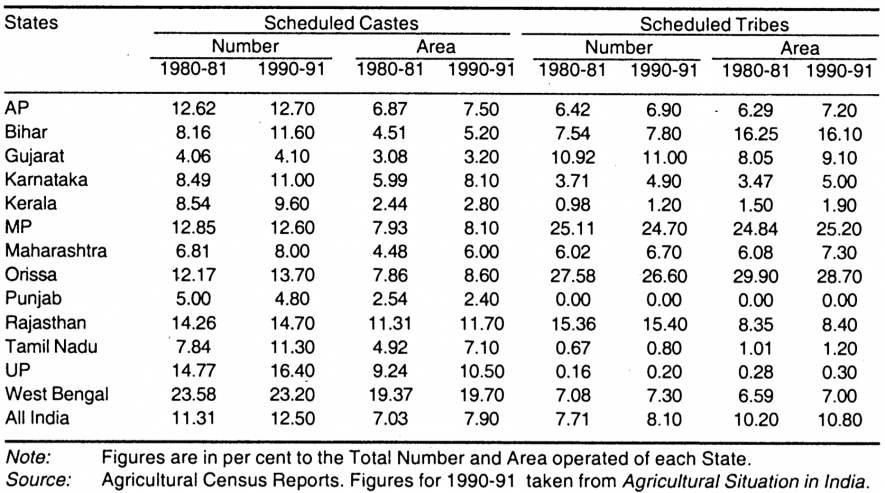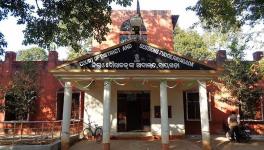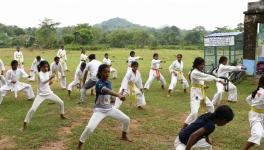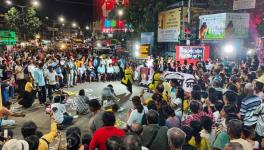How Land Reforms by the Left Empowered Dalits, Adivasis in West Bengal
Image for representational use only.Image Courtesy : The Statesman
It is customary to criticise the communist parties in India for not having ‘sufficient’ representation of dalits and adivasis in their leadership, the connotation being that hence they cannot possibly work for the empowerment of these communities.
Besides the fact that this is factually incorrect, anybody familiar with contemporary history of Left-dominated states, like West Bengal, Kerala and Tripura, will know that several policies for asserting, establishing and maintaining the rights of dalits and adivasis — including the right to equality and dignity — were implemented in these states.
Here we discuss — in brief — how land reforms and Operation Barga in West Bengal under the Left Front rule after 1977 brought about dramatic changes to the social and political life of the people.
Inequality and domination are treated as the basis of the caste system in Hindu society. The lower castes — as per their place in the social hierarchy — are supposed to serve the dominant castes and remain loyal to them. This has been the practice as far back as the history of Indian society can be traced.
The Left Front government initiated land reform measures, distributed land to tillers, ensured the rights of the bargadars (sharecroppers), enhanced the wages of the agricultural labourers and brought about structural changes in the socio-political formation in the rural areas in favour of the Scheduled Castes and the Schedule Tribes.
It was a process of empowering the people and striking at the root of the exploitative feudal structure of the rural society.
The Left Front government also took initiatives in prioritising the speedy implementation of the amended Land Reforms Act.
The department got rechristened from the Department of Land and Land Revenues to that of ‘Land Reforms’. There are three basic features that mark the initiatives undertaken by the Left Front Government of West Bengal in enhancing land reforms.
These are — reclaiming titleless and ceiling surplus plots of land, distributing the same among the poor and the landless farmers, and ensuring the term rights of bargadars through the Operation Barga programme.
No non-Left state government in the entire country has yet matched this success in bringing about land reforms in the agrarian sector as was done in West Bengal.
The West Bengal government’s performance in this field is testified by the fact that 53.2% of the families benefitting from land reforms in the whole country are from West Bengal, leaving all other states far behind.
Also read: Why the Left is the Most Popular Force Among Tribals in Tripura
To put it more simply, upper caste domination in agriculture virtually came to an end as a result of the Operation Barga, leaving the field entirely to be controlled and dominated by the bargadars — who also comprised the SC and ST communities.
People belonging to the SC/ST communities constituted 41.92% of the registered bargadars in 2006.
The rights of bargadars on land was ensured through generations by the public initiative of registering the names of the sharecroppers in 1978. The second and third amendments of the Land Reforms Act came into force in 1981 and 1986, respectively.
In many states, the number of holdings and areas operated upon by the SCs/STs is poor in comparison with their demographic strength.
However, in West Bengal, between 1980-81 and 1990-91, the landholding position of the scheduled groups — both in terms of area as well as number — was much better than any other state.

The SCs, constituting 23% of the state’s population, control more than 23% of the holdings — covering 20% of the operated area as shown in Table 1.
Table 1: Distribution of operational holdings among Scheduled Castes and Scheduled Tribes
Operation Barga left an indelible impact on the SC and ST peasants of West Bengal as it led to the opening up of opportunities for social and economic gains for the them.
It also remains a fact that land was not merely a token of appeasement given to SCs and STs, as in most cases, it was also a matter of dignity and the only means of livelihood for this vast section of people. In addition to this, the programme for the first time had ensured and legalised a secured position for dalits and tribals in agrarian society.
The uplift of SCs and STs not only meant security of the bargadari tenure and bargadars’ relief from the fear psychosis of remaining under constant threat of facing eviction by the landlords — it also paved the way for a new equation to take over in the rural landscape of West Bengal.
For the first time, the upper-caste domination of the zamindars and jotedars was decimated and replaced by people from the SCs/STs, who had so far remained marginalised in agrarian society.
According to a recent survey, under the Buddhadeb Bhattacharjee government (March 31, 2006), land measuring up to 29.82 lakh acres has been reclaimed in West Bengal.
The number of patta (land title deed) recipients stands at 28-49 lakh people. This establishes the fact that dalits and tribals are the ones who benefitted the most as a backward community.
Also read: Understanding India’s Agrarian Crisis: Beyond ‘Pink Bollworms’ and ‘Poor Monsoons’
Apart from this, 4,95,000 joint pattas had been distributed and 1.42 lakh pattas have been given out exclusively to economically backward rural women — facing patriarchal as well as caste-based discrimination — in order to empower them financially.
Under the last Left Front government, a programme was launched in the state, which was also a first in the country. The government decided to buy plots of land to distribute among landless labourers and economically poor rural families. The ethos that the land belongs to those who actually cultivate it, was finally materialised by West Bengal’s Left Front government.
The welfare policies of the Left Front government ensured a decrease in the number of people living below the poverty line to 20% from 60% in 1977, and it could only be achieved because of the all-round development initiatives. The relentless efforts of the Left Front government for the development of the rural economy since its inception have contributed to West Bengal’s achievement of the highest rate of growth in development of SC and ST communities among the states. It is not naive to assert that during Left rule, the SCs and STs in West Bengal enjoyed a kind of dignity that they never had before.
The writer is an independent researcher and journalist. The views are personal.
Get the latest reports & analysis with people's perspective on Protests, movements & deep analytical videos, discussions of the current affairs in your Telegram app. Subscribe to NewsClick's Telegram channel & get Real-Time updates on stories, as they get published on our website.
























